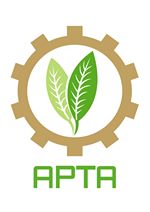Utilization of Cotton Waste from PT Sri Rejeki Isman Tbk. Spinning Division as Basic Material for White Oyster Mushroom (Pleurotus ostreatus) Planting Media
Tasya Sienita(1*), Makhmudun Ainuri(2), Moh. Wahyudin(3)
(1) Department of Agroindustrial Technology, Faculty of Agricultural Technology, Universitas Gadjah Mada, Indonesia
(2) Department of Agroindustrial Technology, Faculty of Agricultural Technology, Universitas Gadjah Mada, Indonesia
(3) Department of Agroindustrial Technology, Faculty of Agricultural Technology, Universitas Gadjah Mada, Indonesia
(*) Corresponding Author
Abstract
There are five types of cotton waste produced by the Spinning Division of PT. Sri Rejeki Isman Tbk: dropping, flat strip recyclean, flat strip c, air waste, and fan open end, which has a smaller trash content. The research objective is to determine the potential utilization of cotton waste as the basic material for white oyster mushroom planting media, to determine effect of planting media formula on the growth of white oyster mushroom, and to determine the best formula for white oyster mushroom planting media. Utilization of cotton waste are examined by 5 formulas: control with 100% sengon wood powder + 200 gram bran + 10 gram lime (S0), 50% dropping + 50% sengon wood powder + 200 gram bran + 10 gram lime (S1a), 75% dropping + 25% sengon wood powder + 200 gram bran + 10 gram lime (S1b), 50% fan open end + 50% sengon wood powder + 200 gram bran + 10 gram lime (S2a) and 75% fan open end + 25% sengon wood powder + 200 gram bran + 10 gram lime (S2b). This study uses a 5x3 Completely Randomized Design (CRD 5x3) and is then analyzed using the One Way Anova test and the Least Significant Difference (LSD) test. The best formula was chosen for planting media based on the highest score in Zero-One Integer Programming. Parameters observed on the planting media are changes in the content of cellulose and lignin, while on the fungal growth is the form of mycelium fulfillment time; the number of fruit bodies; hood width; wet weight, and stem length. This study indicates that cotton waste can be used as a base material for white oyster mushroom planting media, where the best formula is S2b. During fungal growth, in the planting media with formula S2b, cellulose degradation occurs from 66.7% to 60.8%, and lignin degradation occurs from 10.5% to 6.6%. In addition to the media, formula S2b produces mushrooms with growth characteristics including mycelium fulfillment time of 28.33±1.53 days, the number of fruit bodies 17.67±8.96, hood width 5.76±0.87 cm, wet weight 143.33±26.27 grams, and stalk length 4.52±0.55 cm.
Keywords
Full Text:
PDFReferences
Adebayo, G. J., Omolara, B. N., and Toyin, A. E. 2009. Evaluation of Yield of Oyster Mushroom (Pleurotus pulmonarius) Grown on Cotton Waste and Cassava Peel. African Journal of Biotechnology, Volume 8 (2): 215-218.
Arif, E. A., Isnawati, and Winarsih. 2014. Pertumbuhan dan Produktivitas Jamur Tiram Putih (Pleurotus ostreatus) pada Media Campuran Serbuk Tongkol Jagung dan Ampas Tebu. Jurnal LenteraBio, Volume 3 (3): 255-260.
Gordon, S. and You-Lou H. 2007. Cotton: Science and Technology. Cambridge: Woodhead Publishing.
Khan, N. A., Amjad, A., Binyamin, R., Rehman, A., and Hafeez, O. A. 2017. Role of Various Supplementary Materials with Cotton Waste Substrate for Production of Pleurotus ostreatus an Oyster Mushroom. Pak. J. Bot, Volume 49 (5): 1911-1915.
Mutia, T., Sukardan, M. D., Novarini, E., Kasipah, C., and Sana, A. W. 2018. Pemanfaatan Limbah Serat Kapas dari Industri Pemintalan Untuk Felt dan Papan Serat. Jurnal Arena Tekstil, Volume 33 (1): 37-46.
Umarie, I., Shiddieqy, L. A., and Oktarina 2011. Penggunaan Beberapa Macam Limbah Tumbuhan Sebagai Media Tumbuh Jamur Merang (Volvariella volvaceae). Agritech: Jurnal Fakultas Pertanian Universitas Muhammadiyah Purwokerto, Volume 13 (1): 67-85.
Oyedele, O. A., Adeosun, M. V., and Koyenikan, O. O. 2018. Low Cost Production of Mushroom Using Agricultural Waste in a Controlled Environment for Economic Advancement. International Journal of Waste Resources, Volume 8 (1): 1-5. http://dx.doi.org/10.4172/2252-5211.1000329
Parinduri, I., Siregar, H. F., and Iskandar. 2017. Pengontrolan Suhu Kelembaban Kumbung Jamur Tiram Putih. Kisaran Asahan: Royal Asahan Press.
Piryadi, T. U. 2013. Bisnis Jamur Tiram. Jakarta: AgroMedia Pustaka.
Rosmiah, Aminah, I. S., Hawalid, H., and Dasir. 2020. Budidaya Jamur Tiram Putih (Pleurotus ostreatus) Sebagai Upaya Perbaikan Gizi dan Meningkatkan Pendapatan Keluarga. International Journal of Community Engagement, Volume 1 (1): 31-35. https://doi.org/10.32502/altifani.v1i1.3008
Saroso, B. 2002. Aneka Manfaat Hasil Samping Tanaman Kapas. Jurnal Monograf Balittas, Volume 2: 211-221.
Shaikh, T. N. and Pujara, H. 2016. Effect of Cotton Fibers and Their Trash Characteristics on the Performance of Spinning Preparatory Processes. Journal of Engineering Research and Application, Volume 6 (6): 42-45.
Sumarsih, S. 2015. Bisnis Bibit Jamur Tiram. Jakarta: Penebar Swadaya.
Suryani and Hendryadi. 2015. Metode Riset Kuantitatif: Teori dan Aplikasi Pada Penelitian Bidang Manajemen dan Ekonomi Islam. Jakarta: Prenadamedia Group.
Sutarman. 2012. Keragaan dan Produksi Jamur Tiram Putih (Pleurotus ostreatus) pada Media Serbuk Gergaji dan Ampas Tebu Bersuplemen Dedak dan Tepung Jagung. Jurnal Penelitian Pertanian Terapan, Volume 12 (3): 163-168. https://doi.org/10.25181/jppt.v12i3.212
Zulfikar and Budiantara, I. N. 2014. Manajemen Riset dengan Pendekatan Komputasi Statistika. Yogyakarta: Deepublish.
Article Metrics
Refbacks
- There are currently no refbacks.
Copyright (c) 2022 Tasya Sienita, Makhmudun Ainuri, Moh. Wahyudin

This work is licensed under a Creative Commons Attribution-ShareAlike 4.0 International License.









